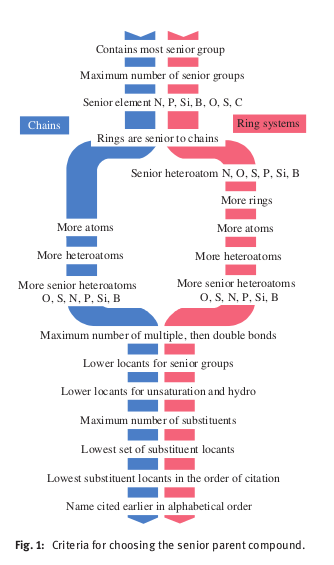In the present case, more atoms is a criterion to be considered earlier than the one of maximum of multiple, than double bonds. IUPAC's brief guide illustrates this by the following flow chart:

(credit to the Brief Guide by Hellwich et al., p.534)
Later, the brief guide illustrates the application of the rules; example f (p. 536) where the vinyl (or systematically: ethenyl group) is attached to the nonane chain:

This is why your second suggestion is the correct one.
(Side note: This and additional references to chemical nomenclature are compiled in the site's dedicated section Resources for learning Chemistry.)
Hellwich, K.-H.; Hartshorn, R. M.; Yerin, A.; Damhus, T.; Hutton, A. T. Brief Guide to the Nomenclature of Organic Chemistry (IUPAC Technical Report). Pure Appl.Chem. 2020, 92, 527–539. https://doi.org/10.1515/pac-2019-0104. (open access)
Addendum: Consultation of the open-access excerpt by Moss (April 2022) of IUPAC's 2013 Blue Book as whole pdf includes a noteworthy section P-44 about the seniority order for parent structures. The introduction (P-44.0) reads
"The selection of a preferred parent structure is based on the seniority of classes (see P-41), which gives priority first to characteristic groups expressed as suffixes and then to parent hydrides when different classes are present. Section P-44.1 covers the selection of a preferred parent structure when different classes are involved and the selection between rings and chains in the same class. When there is a choice among cyclic parent hydrides, the senior ring or ring system is chosen in accord with the seniority order of rings and ring systems (see P-44.2). When there is a choice among acyclic parent hydrides a principal chain must be chosen (see P-44.3). The three seniority orders, for classes, rings and ring systems, and the principal chain, are expressed in a general seniority order called ‘seniority order for parent structures’. Section P-44.4 covers criteria for selection of a senior parent structure applicable to either rings, ring systems, or acyclic chains.
A thorough revision and extension of the seniority order of classes, of rings and ring systems, and for selecting the principal chain was needed in the context of preferred names. This revision incorporates a major change from earlier recommendations given in the 1979 edition (ref. 1) and the 1993 Guide (ref. 2).
In acyclic parent structures the order of seniority between unsaturation and length of chain given in earlier
recommendations is reversed. Thus, the first criterion to be considered in choosing a preferred parent acyclic chain
is the length of the chain; unsaturation is now the second criterion."
The emphases in italics/bold are additions by me. In the original (both Moss' version, as well as RSC's e-book), the last paragraph is set in a framed box I'm not aware how to replicate here.



